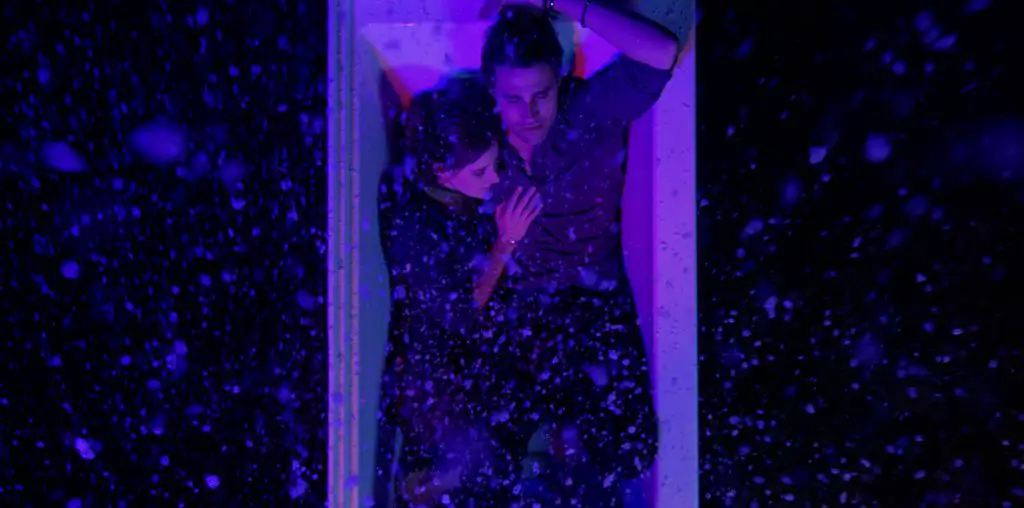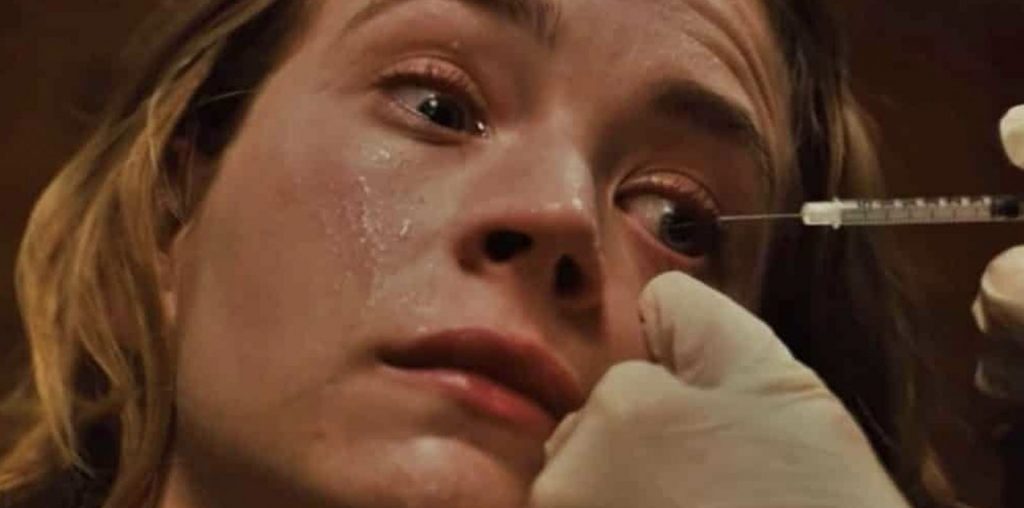
It’s the 1960s, and Father Gregory (Cory Ahre) has been called in by a couple of government agents to help them interrogate a man who is claiming to be a vampire. The man, Condu (Joel Jeremy Herrera), was also in possession of a book, written in Latin, which Father Gregory initially translates as being a handbook for vampires. Prompted to meet with Condu, Father Gregory does and the strange, sharp-toothed gentleman begins opening up to the priest. A breakthrough, as Condu hasn’t spoken to anyone since being incarcerated.
Now that Condu is talking, the government doesn’t want him to stop, asking Father Gregory to continue meeting with him while, at the same time, working on translating the rest of the book. Father Gregory dutifully does both, though things take a further turn for the odd when Condu escapes. He’s not done with Father Gregory and he wants his book back.
Mark Beal’s Enchiridion is a noir tale packed with strangeness. Vampires are one thing, but that’s just the setup for a story that spirals in all kinds of directions. As Father Gregory is drawn deeper into Condu’s world, so too is that world warped for the audience watching.
I know it’s going to sound strange to call the first half of the film, where Condu is captive and Father Gregory is meeting with him, the normal part of the movie, but it truly is. The fact is, when the second half of the film rolls around and Father Gregory has entered Condu’s realm, as it were, to return the book, everything goes even more surreal than it had been before. Pterodactyls are not uncommon, and the best detective to be found is also a talking dog.
Every odd twist is accepted and nothing turns out to be shocking; the film’s lack of recoil prompts the audience to be more receptive too. If it doesn’t bother the priest, who is hunting down a vampire while being assisted by a talking dog, in some warped interpretation of an ever-expanding Beatnik era, then why should it bother us?
For as nutty as the narrative gets, however, I felt somewhat underwhelmed. Personally, I was charmed by the approaching Silence of the Lambs nature of Condu and Father Gregory’s interviews, and was enjoying the interpretation of the vampire legend (not a new one, but rendered interestingly enough in stop-motion animation). When the film turns into a more active mystery, though as weird a noir tale as you can get, I found it more visually compelling then I connected with the actual mystery that remained.
But then again, maybe there’s a different interpretation one could take with the film than what I took initially. Considering the themes of religion, drug abuse and the like, this might have never been about a vampire giving his historical account of vampiric history. I’d be open to an interpretation of the entire film as a reflection of Father Gregory’s warring psyche, the book perhaps his confessions of a life he’s trying to leave behind and the journey he undergoes simply the trials and tribulations of a troubled mind trying to find salvation. I could be convinced of a more literal interpretation of events or otherwise, so points are due the film for being ambiguous in a way that prompts thought instead of ambiguous in a way that confounds needlessly.
Visually, the black and white aesthetic helps fuel the film’s neo noir leanings, and the dating of the film in the 1960s allows it to wink back to the Beat era as it had progressed. Wrapped up in all of this “cool” style are stop-motion animation sequences and other visual effects trickery blended to take the tale to new, disorienting and fun, heights. In many ways, the film plays like a freeform Beat poem, or perhaps numerous ones interpreted visually. The jazz score doesn’t hurt things either.
Overall, Enchiridion is an intriguing tale, regardless of what level you engage it on. I found it delightful to watch even in the moments when its other charms had worn off. If you like your noir with a bit of the supernatural, or talking dogs and attack monkeys, then this is for you.
This film was submitted for review through our Submission for Review system. If you have a film you’d like us to see, and we aren’t already looking into it on our own, you too can utilize this service.

